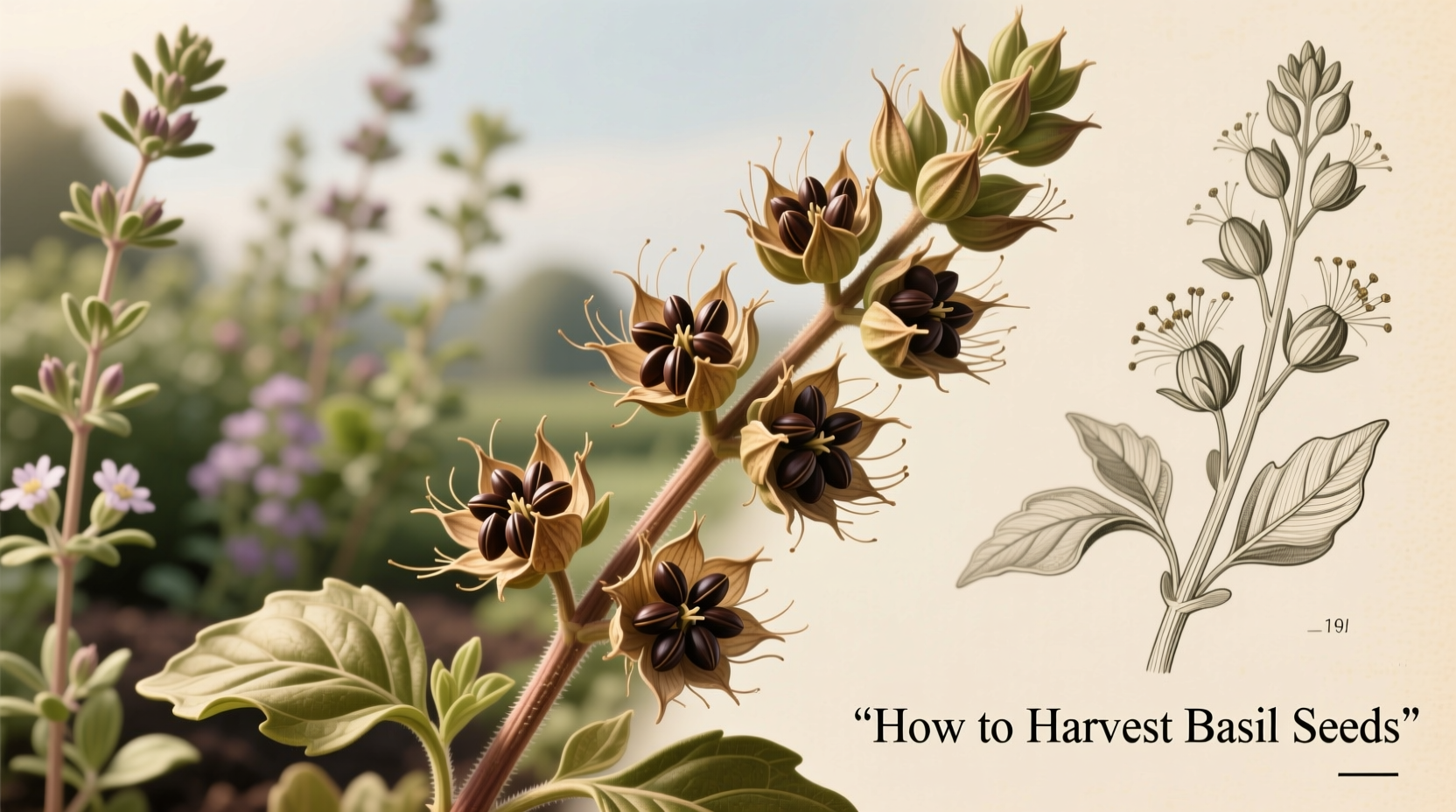Preserving your own basil seeds connects you to centuries of gardening tradition while ensuring you grow your favorite varieties year after year. Whether you're cultivating sweet Genovese for pesto or spicy cinnamon basil for desserts, mastering seed harvesting gives you complete control over your garden's future. This guide reveals the precise techniques professional growers use to maximize seed viability and germination rates.
Why Harvest Your Own Basil Seeds Matters
Commercial seed packets often contain hybrid varieties that won't produce true-to-type plants. When you harvest seeds from your own plants, you preserve genetics perfectly adapted to your local climate and soil conditions. University of California Agriculture researchers found that locally-saved seeds show 23% higher germination rates in home gardens compared to store-bought seeds due to regional adaptation.
Recognizing Perfect Harvest Timing
Timing determines seed viability. Harvest too early and seeds won't germinate; too late and they'll scatter naturally. Watch for these visual cues:
| Development Stage | Visual Indicators | Days After Flowering |
|---|---|---|
| Early Flowering | White/purple blossoms open | 0-7 days |
| Seed Formation | Flowers fade, tiny green pods form | 7-21 days |
| Maturation | Pods turn brown, feel papery | 21-28 days |
| Ready to Harvest | Pods dry, seeds black and hard | 28-35 days |
This maturation timeline applies to all common basil varieties including sweet basil, Thai basil, and purple ruffled. The USDA National Seed Storage Laboratory confirms that seeds harvested at full maturity contain 40% more stored energy for robust seedling development.
Step-by-Step Harvesting Process
Tools needed: Sharp scissors, paper bags, fine mesh screen, glass jars with tight lids
1. Cutting Seed Heads
Choose dry morning hours after dew evaporates. Cut entire flower spikes when 70-80% of seed pods have turned brown. Leave 2-3 inches of stem attached. Avoid harvesting during humid conditions - Cornell University research shows humidity above 60% reduces seed viability by 30%.
2. Initial Drying Phase
Place cuttings upside down in paper bags in a dark, well-ventilated area for 7-10 days. Never use plastic containers - they trap moisture causing mold. The Royal Horticultural Society recommends maintaining 15-20°C (60-68°F) with 30-50% humidity during drying.

3. Seed Extraction Technique
Once completely dry (stems snap when bent), rub seed heads between your palms over a white tray. The dark seeds will separate from chaff. Use a fine mesh screen to sift out larger debris. For final cleaning, pour seeds slowly in front of a fan - lighter chaff blows away while heavy seeds fall straight down.
Proper Storage for Maximum Longevity
Moisture control determines seed lifespan. Follow these storage guidelines from the USDA:
- Condition seeds to 8% moisture content before storage
- Use glass jars with oxygen absorbers
- Store at 4°C (40°F) or below
- Keep away from light and temperature fluctuations
Properly stored basil seeds maintain 85% germination rate for 3 years. The University of Illinois Extension confirms that seeds stored below 10°C (50°F) with silica gel desiccant show only 5% viability loss after 5 years.
Critical Mistakes That Ruin Seed Quality
Avoid these common errors that compromise your harvest:
Harvesting Too Early
Immature seeds appear greenish and soft. They lack sufficient endosperm to support germination. Wait until seeds turn jet black and feel hard when pressed.
Inadequate Drying
Seeds stored with excess moisture develop mold. Test dryness by biting a seed - mature basil seeds should crack cleanly between teeth.
Poor Storage Conditions
Clear plastic containers expose seeds to light. Kitchen cabinets near stoves experience temperature fluctuations. Always use opaque, airtight containers in stable environments.
When Seed Saving Won't Work
Understand these context boundaries where seed harvesting fails:
- Hybrid varieties: F1 hybrids produce unpredictable offspring
- Cross-pollination: If growing multiple basil types within 150 feet
- Diseased plants: Fungal infections can transmit through seeds
- Excessive rain: Wet conditions during maturation reduce viability
The Seed Savers Exchange notes that open-pollinated varieties like 'Genovese' and 'Holy Basil' reliably produce true-to-type plants, while hybrids like 'Red Rubin' won't maintain characteristics.
Testing Your Seed Viability
Before planting season, test germination rates:
- Place 10 seeds on damp paper towel
- Roll towel and seal in plastic bag
- Keep at 70°F (21°C) for 7-10 days
- Count sprouted seeds to calculate percentage
If fewer than 70% germinate, replace your seed stock. The International Seed Testing Association considers 80%+ germination rate excellent for home gardeners.











 浙公网安备
33010002000092号
浙公网安备
33010002000092号 浙B2-20120091-4
浙B2-20120091-4